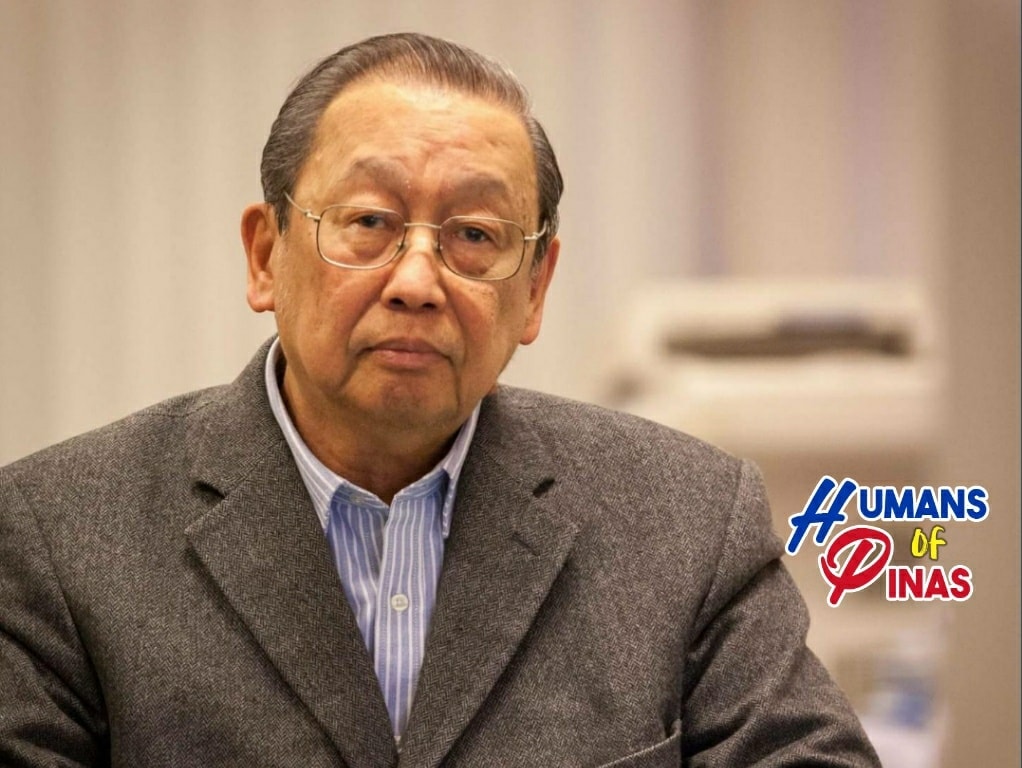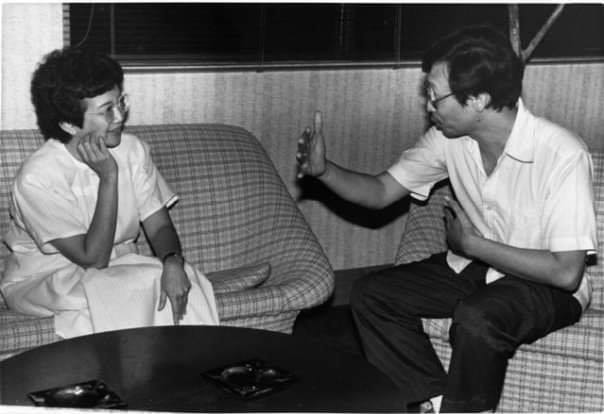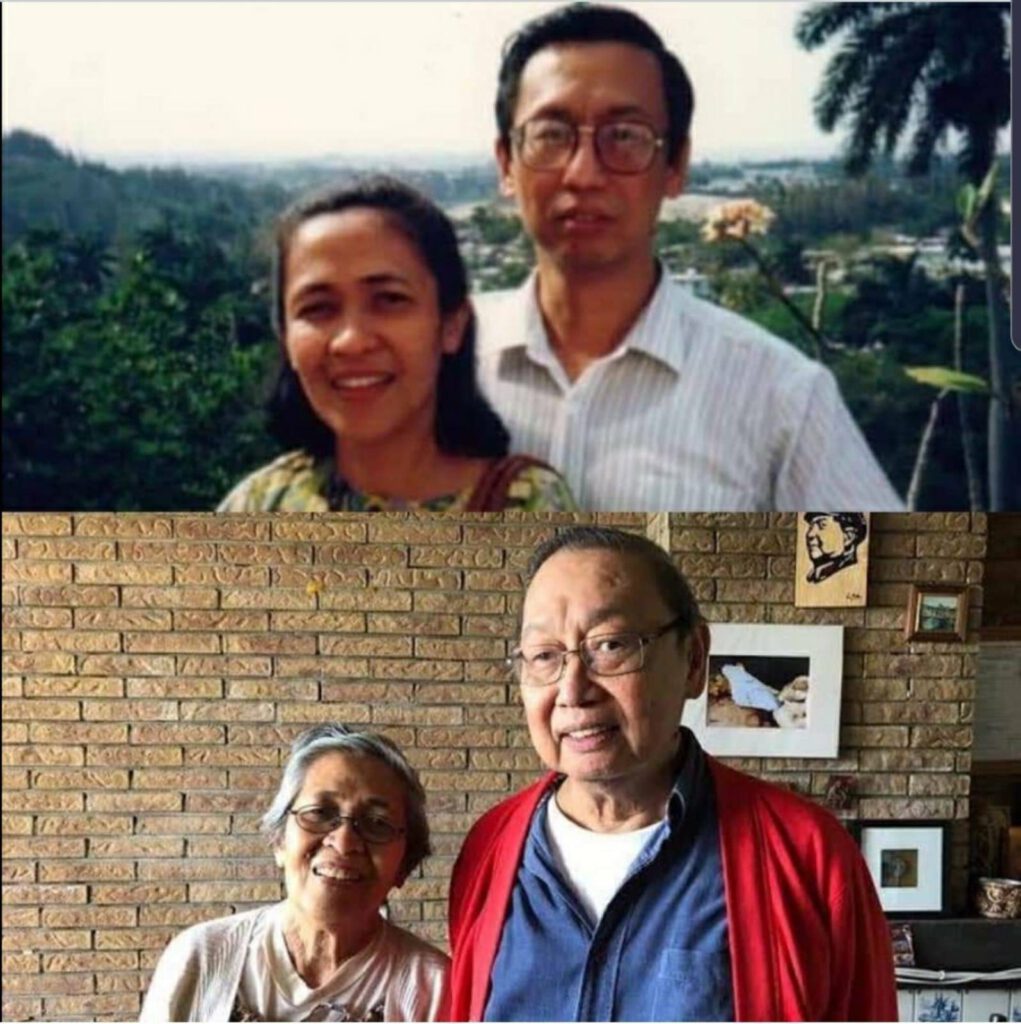
“I had the distinction of being the only political prisoner who was tortured just after meeting Marcos, so in my particular case, he could not deny his criminal responsibility for my torture.
I was arrested together with my wife Julie and three other persons at about 2 a.m. on November 10, 1977 in a house at Barrio Pagdalagan del Norte, San Fernando, La Union.
My captors did their best to look and talk in an intimidating way. At one point, the notorious Capt. Rodolfo Aguinaldo pressed his caliber 45 to my head. He pushed me into a van so hard that my eyeglasses were broken and destroyed at the risk of damage to my eyes and that my shins were gashed and bruised. I was brought all the way to the C-2 Office at Camp Crame.
I was presented to Marcos at the Presidential Security group headquarters at nearly noontime. He tried to flatter me by saying that he had avidly read my writings. Then, he offered national unity and reconciliation. I told him that it would be good if he considered the national and democratic rights of the people and I warned him that, someday, US would regard him as more of a liability than an asset. We engaged mostly in a debate for about thirty minutes.
At some time past 11 p.m., I was blindfolded and brought from Camp Crame to what I would later find out after several months to be the Military Security Unit of the Philippine Army at Fort Bonifacio. I was pushed into a small, suffocating cell with a boarded-up window.
On the succeeding two days, I was subjected to relays of interrogators who kept on asking who was supposed to be my successor in the Communist Party, besides other questions. I simply refused to answer any of the questions or parried them by citing my right to legal counsel or by drawing my interrogators into some political discussion.
Events took a very drastic turn between 8 and 9 p.m. on the third day. On the allegation that I was trying to escape, I was blind-folded with my own shirt and handcuffed behind my back. After a while, another person came to subject me to barrages of fist blows on the chest and floating ribs.
My assailant, together with still another person, interrogated me on such questions as who are the AFP officers connected with the CPP, the armed strength and disposition of the NPA, sources of funds, houses or barrios to which I would go in case of a successful escape, and so on.
I was given several blows for every question that was asked. It seemed that my assailant was never satisfied with my answers as he kept on hitting me. The punching session must have lasted for at least an hour. I was subsequently chained to a cot by one hand and one foot, with the use of handcuffs.
The room was dark when I removed the blindfold with my free hand. But a large flashlight was constantly on and focused on my face, I was kept awake by two young men in their twenties who alternated in asking me questions that had been asked of me during the punching session and also in making death threats and insults. I was repeatedly told that I would be killed as if in the act of escaping if I did not “cooperate.”
A pistol was always pointed at me by one of the two men who said from time to time that I would be disposed of the following day. He kept on kicking at the foot of the cot. He would also make a motion of wanting to hit me and the other man would pretend to hold him back. It was obvious to them that I was not intimidated. They would curse whenever I told them to let me sleep or to learn methods of investigation from Hawaii Five-O.
Throughout the morning, noon and early afternoon of November 14, 1977, two men who were apparently officers alternated in interrogating and keeping me awake. One made veiled threats about a scheme to finish me off. The other had a menacing style—talking forcefully and occasionally flexing one arm as if he wanted to hit me. I gave general answers only to those general questions which any man on the street would venture to answer. Both appeared to be staff officers of the MSU.
At about 4 p.m. of November 14, I was again blindfolded as a swarm of men came into the room. I was able to see some of them, especially the one who looked like a senior officer (he was later identified to me as Col. Miguel Aure when he came to my room with Capt. Saldajeno on July 14, 1978). I can identify at least three more of these men if I see them again.
My free hand and free feet were shackled by handcuffs to the cot. Thus, I was completely bound to the cot. A pail of water was brought in, a face towel was placed across my nose and mouth. I had to be pinned down by the shoulders as I kept on struggling, lifting the upper part of my body, moving my head vigorously and, at time, succeeding in loosening the blindfold and seeing the faces of my tormentors. At one point, someone had to sit down on my stomach to hold me down as the water cure was in progress.
Water was poured into my nostrils through the towel and my mouth was held shut to suffocate me and force me to seek relief and answer questions. From time to time, a gun barrel was poked into my mouth, especially when I did not make an answer or said something that my tormentors did not like or appeared not to believe. They also repeatedly threatened to subject me to electric shocks before they would kill me.
The “water cure” session must have taken some six hours. I was asked about eighty-five questions which I would later be able to tabulate. (These are listed in my account dated June 23, 1978.) These were repeated so many times as my answers or lack of answers appeared unsatisfactory to my tormentors. I had to suffer even for names and pseudonyms I was completely ignorant of. I also had to suffer even for the names of mountains and barrios I was not aware of. The questions were interspersed with insults and death threats.
My torturers were most persistent on such questions as the whereabouts of Rodolfo Salas, members and staffers of the Central Committee of the CPP and so-called underground houses; AFP officers and religious leaders in the regions; CPP sources of funds and supposed business enterprises; whereabouts of my children; contacts with the Chinese Communist Party; and reasons for my having asked for Attys. Diokno and David as my lawyers.
Towards the end of the strangulation session, when I was about to fall asleep from exhaustion, one of my tormentors tried to apply hypnosis on me and failed. For all their troubles, my tormentors got either outright negative answers, cock and bull and trip wire. I was without food and sleep for about twenty-six hours, from the beginning of the punching session to the end of the “water cure” session. Even after the latter session, two relays of interrogators still came after my meal so that I was not able to rest until around midnight.
Until November 17, 1977, relays of interrogators would come to the room every morning, afternoon and evening. The first interrogators would come as early as 5 or 6 a.m. and the last interrogators would depart as late as 1 or 2 a.m. I had to maintain my wits and integrity even as I was in some daze and was not allowed to recover completely from the punching and water cure. I suffered chest pains as a result of the punches and water cure and my hands were numb from the wrist down as a result of the overtightness of the handcuffs during the torture session.
It would only be after two months that I would fully recover from the chest pains and after three months from the numbness of my hands. From November 15 to November 17, 1977, I was always blindfolded by the guards before the interrogators entered my cell. Questions already asked during the strangulation session of November 14 were merely repeated ad nauseam.
In the following years, I would be kept in solitary confinement in the same fully enclosed cell, a small room with a boarded-up window. From 11 a.m. to 5:30 p.m. of the months of November to January, it was oppressively hot. In the summer months, it was practically hell during the day and was oppressively hot even at night. During the day, a wet cloth dried up in a few hours’ time.
I was shackled to my cot by my right hand and left foot day in and day out, on a 24-hour basis. This was constant physical violence on my person. I consider this even more savage than the punching and water cure sessions. I was told sometimes by an officer and at other times by the guards in some threatening or mocking tone that I had to be chained because I had refused to “cooperate” or because I would escape or commit suicide. I was unchained only for brief periods of a few minutes to take my meal or go to the toilet; and my guard always insolently harried me and often made insulting remarks.
From June 23, 1978 onwards, I was disconnected or unchained from my cot. But I was still shackled by both feet by a pair of handcuffs during my waking hours. Thus, I could only toddle around the room like a small child learning to walk. When I went to sleep at night, I was chained to the cot. As from the very start, the inspectors came so often to flash a light on me even as I was already chained to the cot for my rest.
It was unfair and unjust that, for two years, my wife and I were in separate and solitary confinement under the same military unit. My solitary confinement lasted for more than five years, interrupted only when I was kept in partial isolation with my wife Julie in 1980-81 during which time, she gave birth to our fourth child Jasm.
My solitary confinement ended in 1985 when the Supreme Court finally ruled against it as a result of strenuous efforts by my counsel, Atty. Juan T. David, and the human rights mass movement. He persistently denounced the fact that I was the political prisoner of the Marcos regime most subjected to cruel and inhumane treatment for being in solitary confinement for more than five years.
I was in military detention for nearly nine years.”

Jose Maria “Joma” Sison is the writer and activist who co-founded the Kabataang Makabayan (KM) with Nilo Tayag in 1964 and founded the Communist Party of the Philippines (CPP) in 1969 and its military wing, the New People’s Army (NPA), in 1969. He was CPP’s principal theoretician and NPA’s tactician. Sison was arrested during Martial Law and was imprisoned for almost 9 years.
Since 1987, Sison has resided in the Netherlands where he is seeking asylum as a political refugee.
Conversation with Cory Aquino on the day of Sison’s release on March 5, 1986 
Joma with wife, Julie, over the years